Over Fertilization/2015
Installation View, from Agro-Art
The Petach Tikvah Museum of Art
Curator: Tali Tamir

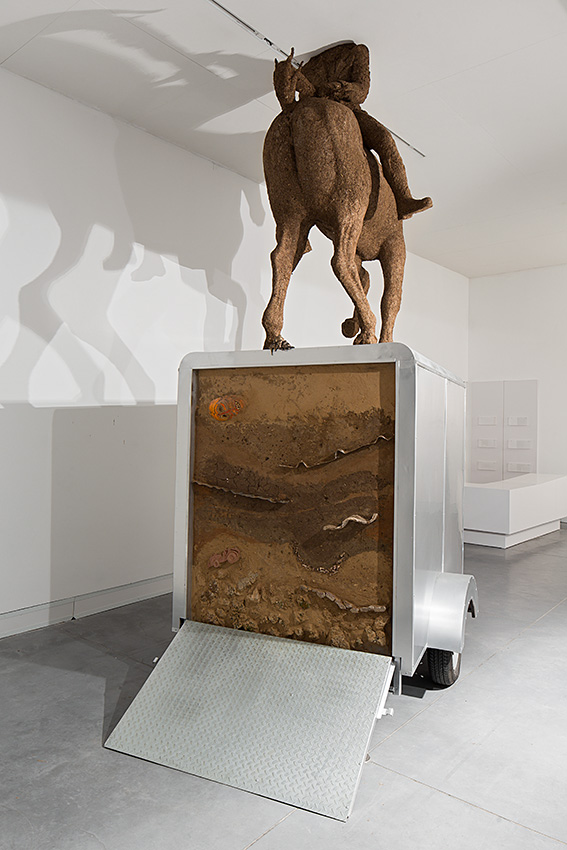
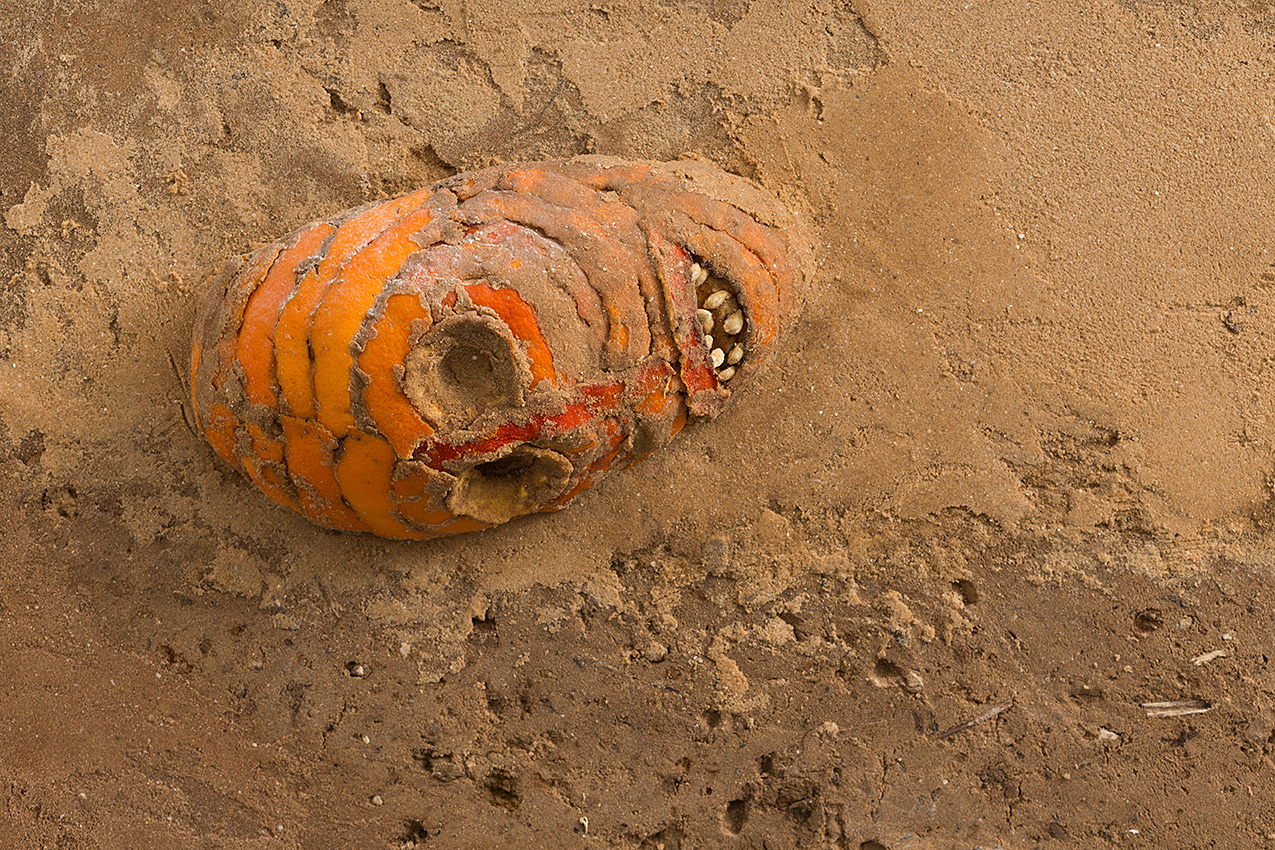
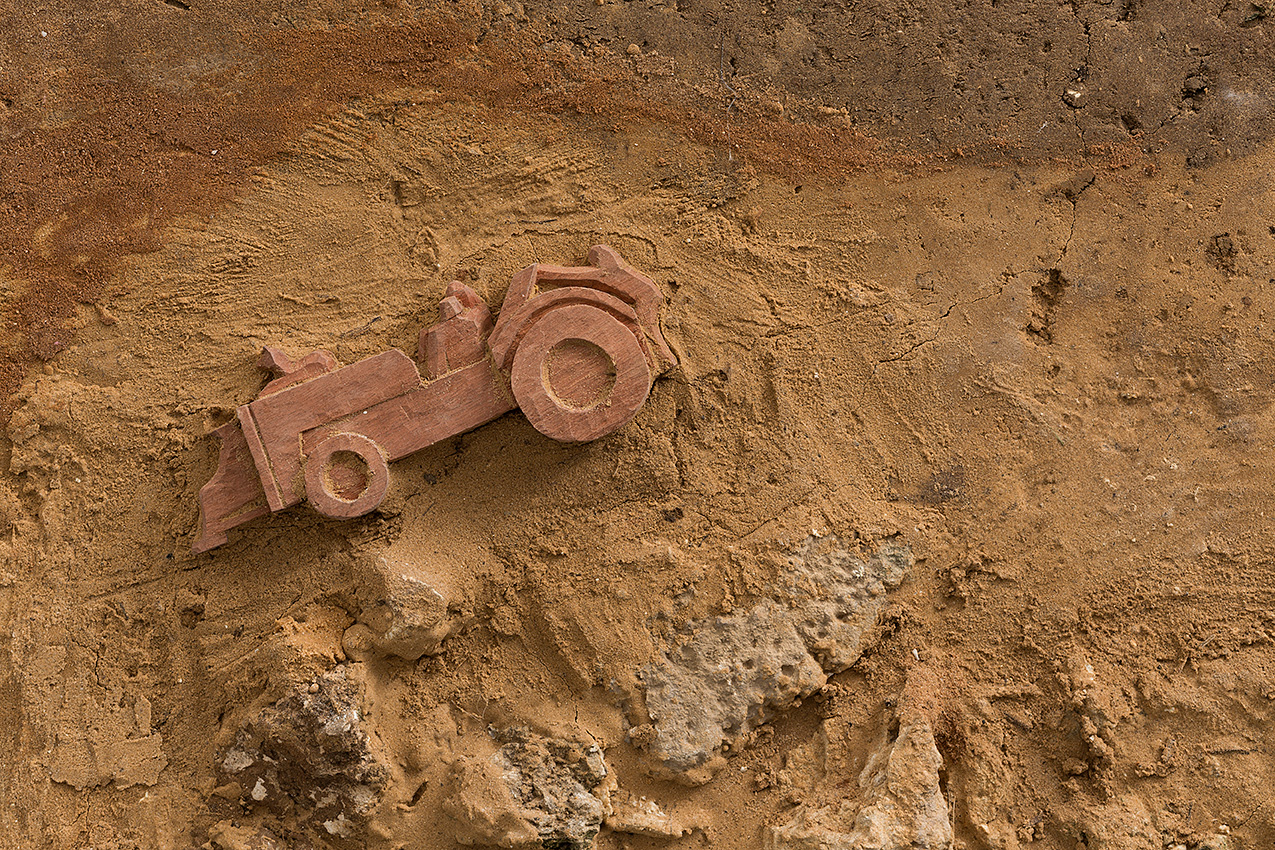
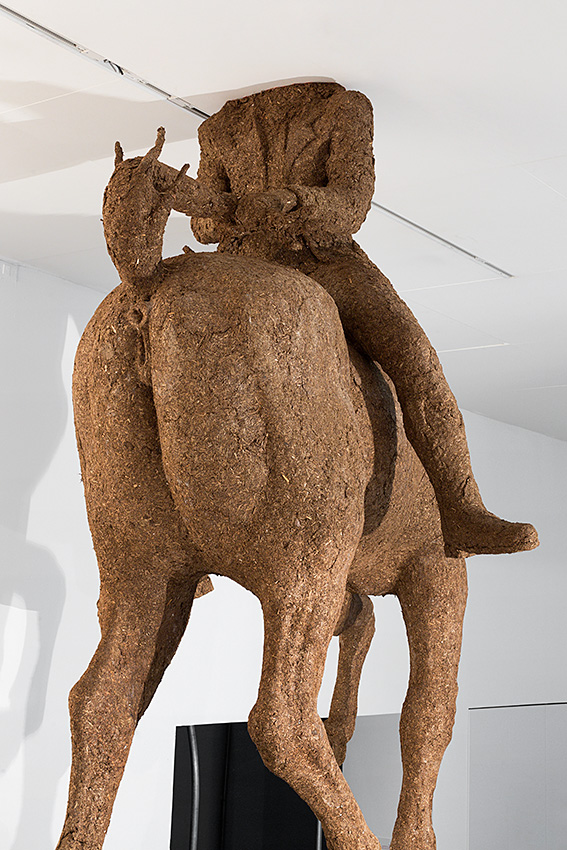
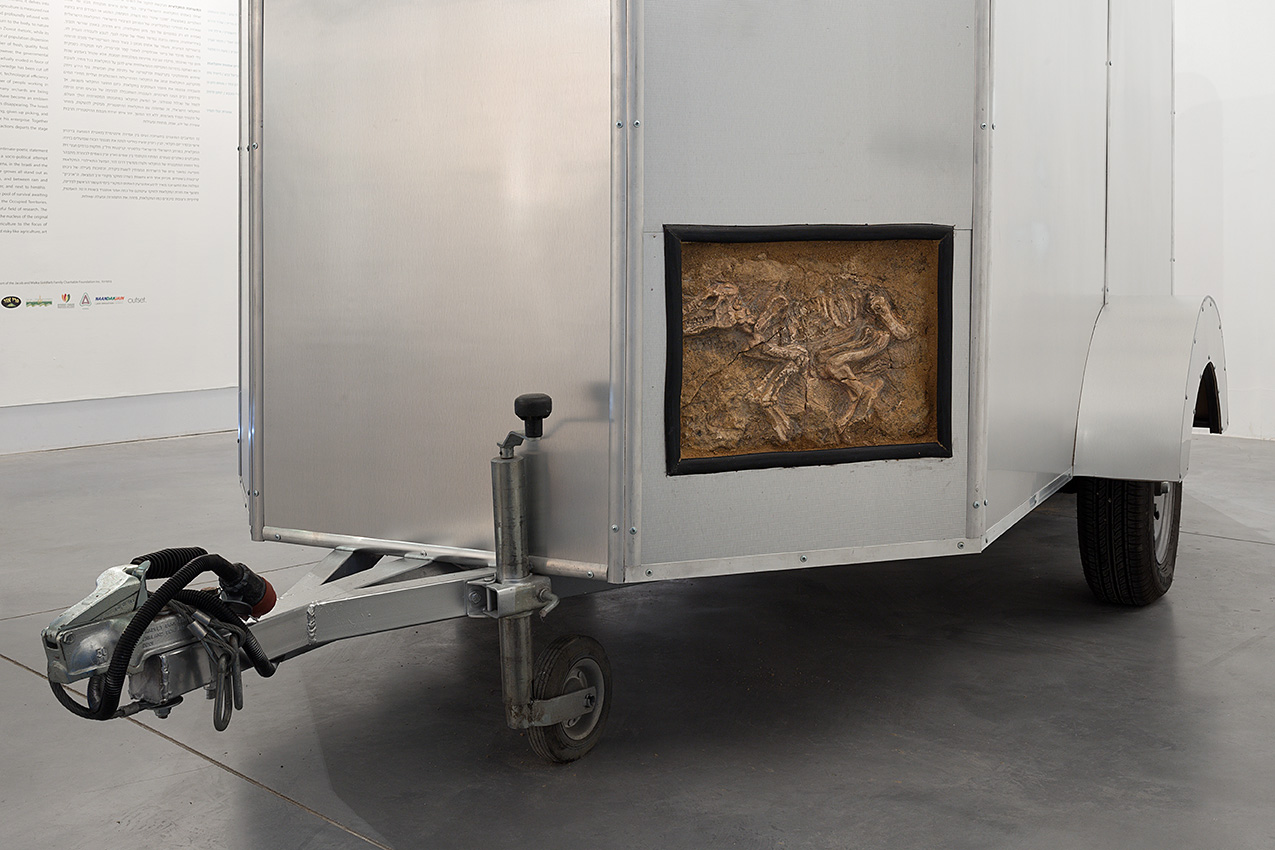
A tall “totem” of a headless horseman, constructed as an axis between sunset and sunrise, dictates the structure of Zohar Gottesman’s sculpture/monument, introducing a scheme of transformation. Addressing the tension between the tradition of classical sculpture and contemporary, mundane materials, Gottesman’s work is based on the familiar image of the victorious horseman monument. His galloping rider sits backwards, holding the horse’s raised tail, exposing his anus. The marble and bronze—the noble materials of which such imperial victory monuments are made—have been replaced here with horse manure, a substance heaped behind the stables recently erected amidst the fields and orchards in the artist’s native moshav. The dung—malleable yet disconcerting material—is used due to its availability in the artist’s immediate surrounding and its being a marker of denial: it is ubiquitous, yet generally ignored, an expression of organic and economic “over fertilization” attesting to a change of priorities.
In the lower plane, under the horse’s hooves, is a lump of soil containing the archaeological remnants of a farm: parts of buildings, chicken bones, “Neolithic” masks made of orange peels, and various fossils, including a tractor carved in wood, carrying the entire Gottesman family, young and happy. The woodcarving is implied, alluding to Cubist geometry, an echo of an optimistic modernism cast into the abyss of history. Gottesman, the grandson of the moshav founders, raises questions vis-à-vis the new landscape, and observes a foreign culture, which boasts an unknown status. This entire array rolls on the transient basis of a horse trailer.
Press